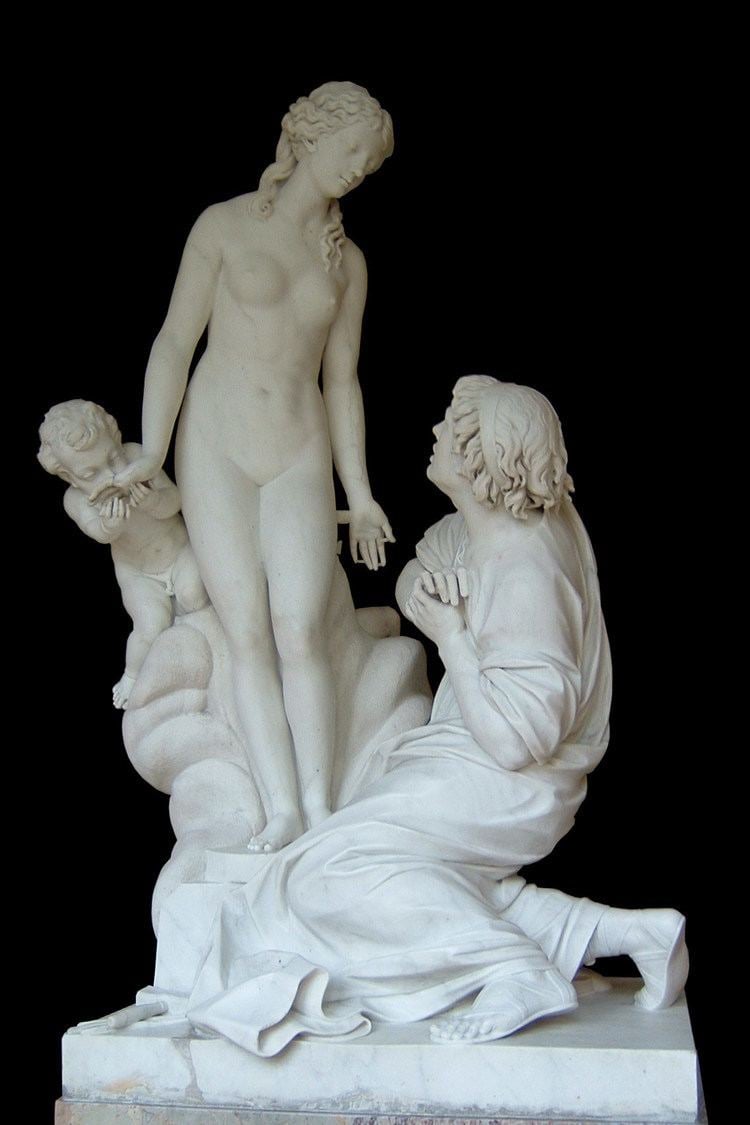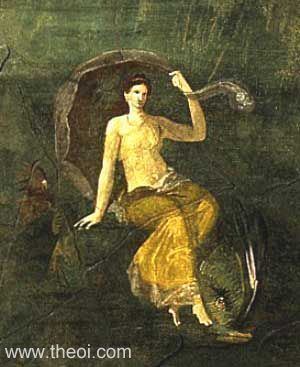 | ||
Galatea (/ˌɡæləˈtiːə/; Greek: Γαλάτεια; "she who is milk-white") is a name popularly applied to the statue carved of ivory by Pygmalion of Cyprus, which then came to life, in Greek mythology; in modern English the name usually alludes to that story. Galatea is also the name of Polyphemus's object of desire in Theocritus's Idylls VI and XI and is linked with Polyphemus again in the myth of Acis and Galatea in Ovid's Metamorphoses.
Contents

The name

Though the name "Galatea" has become so firmly associated with Pygmalion's statue as to seem antique, its use in connection with Pygmalion originated with a post-classical writer. No extant ancient text mentions the statue's name, although Pausanias mentions a statue of Calm, Galene (γαλήνης). As late as 1763, a sculpture of the subject shown by Falconet at the Paris Salon (illustration) carried the title Pygmalion aux pieds de sa statue qui s'anime ("Pygmalion at the feet of his statue that comes to life"). That sculpture, currently at the Walters Art Museum in Baltimore, now bears the expected modern title Pygmalion and Galatea. According to Meyer Reinhold, the name "Galatea" was first given wide circulation in Jean-Jacques Rousseau's scène lyrique of 1762, Pygmalion. The name had become a commonplace of pastoral fictions, because of the well known myth of Acis and Galatea; one of Honoré d'Urfé's characters in L'Astrée was a Galatea, though not this sculptural creation.
Myth

The story of Pygmalion appeared earliest in a Hellenistic work, Philostephanus' history of Cyprus, "De Cypro". ecstatic relationship," Meyer Reinhold has remarked, "there may be lurking a survival of the ancient cult of the Great Goddess and her consort."

Cinyras, perhaps the son of Paphus, (), or perhaps the successful suitor of Metharme, founded the city of Paphos on Cyprus, under the patronage of Aphrodite, and built the great temple to the goddess there.
Interpretation

The myth indicates that a cult image of Aphrodite was instrumental in some way in the founding myth of Paphos. It also seems axiomatic, apart from miraculous intervention, that the living representative of a cult image could be none but the chief priestess. Robert Graves gives a socio-political interpretation of the story, as a mythologized overthrow of a matrilineal cult. In his view Pygmalion, the consort of the goddess's priestess at Paphos, kept the cult image of Aphrodite as a means of retaining power during his term, after which, Graves speculates, he refused to give up the goddess's image "and that he prolonged this by marriage with another of Aphrodite's priestesses—technically his daughter, since she was heiress to the throne—who is called Metharme ("change"), to mark the innovation."
Pygmalion is the Greek version of the Phoenician royal name Pumayyaton: see Pygmalion of Tyre.
